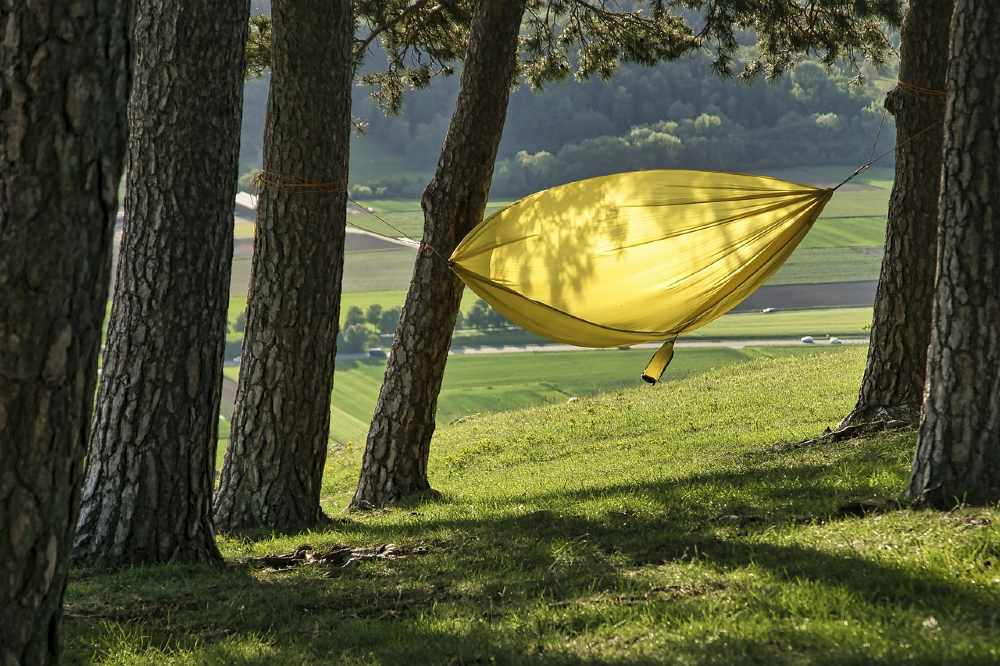When it comes to creating the ultimate outdoor oasis in your backyard, a hammock can be the perfect addition. It’s a symbol of relaxation, a gentle swing under the open sky, where you can escape from the daily grind and enjoy a moment of peace.
But with so many types, sizes, and materials available, how do you choose the perfect hammock for your space? In this blog post, we’ll guide you through everything you need to consider to find the ideal hammock that suits your backyard, lifestyle, and needs.
Understanding the Different Types of Hammocks
The first step in choosing the perfect hammock is understanding the various types available. Hammocks come in several styles, each with its unique features and advantages. The most common types include:
Recycled Hammocks: Recycled hammocks are a fantastic choice for those committed to environmental sustainability. By repurposing materials like recycled plastic or fabric, these hammocks help reduce waste and lower the demand for new resources. As sustainable hammocks, they offer the same comfort and durability as traditional options while contributing to a greener planet. Opting for recycled hammocks not only enhances your outdoor space but also supports eco-friendly practices, making your relaxation time more rewarding.
Rope Hammocks: These are the classic hammocks that come to mind when you think of a traditional hammock. Made from cotton or polyester ropes, they offer great ventilation, making them perfect for hot weather. However, they may not be as comfortable for long periods, especially if you’re not using a cushion.
Fabric Hammocks: These are made from solid fabric, such as cotton, polyester, or a blend of both. They provide a more uniform and comfortable surface, which makes them ideal for extended lounging. Fabric hammocks also come in various patterns and colors, allowing you to choose one that complements your backyard decor.
Quilted Hammocks: These are an upgrade from the standard fabric hammocks, offering additional padding for extra comfort. They’re perfect if you plan to spend a lot of time in your hammock but keep in mind that they may not dry as quickly after rain.
Mayan and Brazilian Hammocks: Known for their vibrant colors and intricate weaving, these hammocks are typically made from cotton or nylon. They’re extremely comfortable, as the fabric conforms to your body, providing excellent support. They also tend to be more durable and can hold more weight compared to other types.
Camping Hammocks: Designed for outdoor enthusiasts, these hammocks are lightweight, compact, and usually made from nylon or other synthetic materials. They’re easy to set up and take down, making them ideal for both backyard use and camping trips.
Considering the Size and Capacity
Once you’ve decided on the type of hammock, the next step is choosing the right size. Hammocks come in various sizes, from single to double to family-sized models. A single hammock is perfect if you’re the only one who will be using it, while a double hammock is great for couples or if you want extra room to stretch out. Family-sized hammocks are the largest, capable of holding multiple people at once.
It’s also crucial to check the weight capacity of the hammock. Ensure that the hammock you choose can support the combined weight of everyone who plans to use it. Exceeding the weight limit could result in damage to the hammock or even injury. Always err on the side of caution and choose a hammock with a higher weight capacity than you think you’ll need.
Choosing the Right Material
The material of your hammock is another important consideration, as it affects both comfort and durability. The most common materials are cotton and polyester, but there are also options like nylon and olefin.
Cotton: Soft and comfortable, cotton hammocks are a popular choice for their natural feel. However, cotton is more susceptible to weathering and may not last as long if left outside in the elements.
Polyester: More durable than cotton, polyester hammocks are resistant to mildew, fading, and weather damage. They’re a great option if you plan to leave your hammock outside most of the time.
Nylon: Lightweight and strong, nylon hammocks are often used for camping and travel. They’re quick-drying and resistant to mold and mildew, making them suitable for humid environments.
Olefin: A synthetic material known for its durability and resistance to UV rays, olefin is an excellent choice for outdoor hammocks. It’s also resistant to moisture, making it ideal for areas with a lot of rain.
Considering the Frame and Stand
If you don’t have trees or posts in your backyard to hang your hammock, you’ll need a hammock stand. Hammock stands come in various materials, such as wood, metal, and steel. The choice of stand should depend on the weight capacity, stability, and durability.
Wooden Stands: Wooden stands are aesthetically pleasing and blend well with natural surroundings. However, they require maintenance to protect against rot and weathering.
Metal Stands: Metal stands are more durable and weather-resistant. They often come in powder-coated finishes to prevent rust, making them suitable for outdoor use. They’re also typically easier to assemble and move around your yard.
Steel Stands: Steel stands are the most robust, providing maximum support and stability. They’re ideal for larger or family-sized hammocks but may be heavier and more challenging to move.
Choosing the perfect hammock for your backyard involves careful consideration of the type, size, material, and stand. Think about how and where you plan to use the hammock, the climate in your area, and who will be using it. By taking these factors into account, you can find a hammock that not only enhances your outdoor space but also provides a comfortable and relaxing retreat.
Whether you’re looking to create a solitary nook for yourself or a communal space for family and friends, the right hammock can transform your backyard into a personal paradise. So take your time, explore your options, and soon enough, you’ll be swaying peacefully in your very own perfect hammock.




